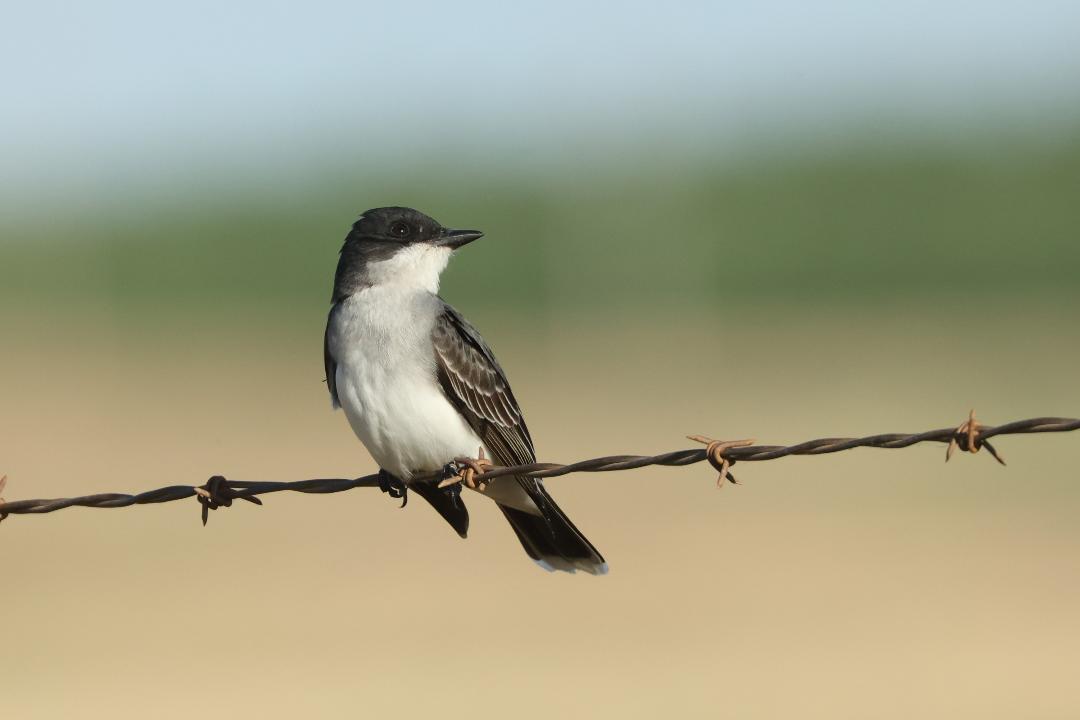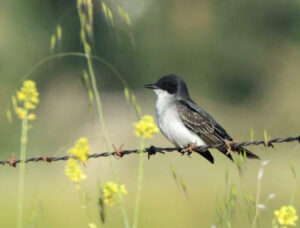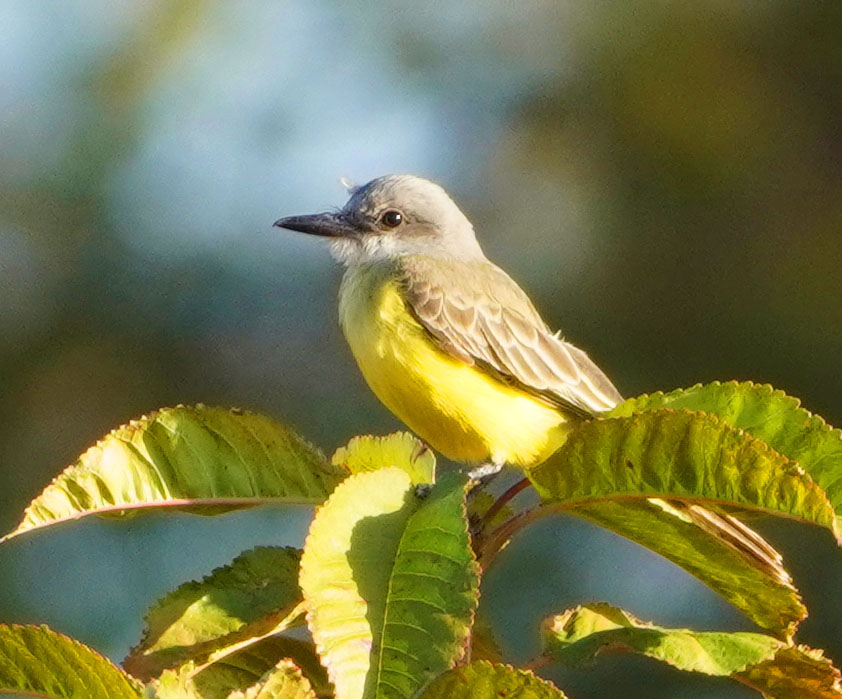For most anyone else, the black-and-white bird that flew in front of Harold and Sharon Reeve on May 20 as they were driving along a country road in northeastern Stanislaus County might not have seemed unusual. For the two veteran birders, it was a singular event.
“Eastern Kingbird,” shouted Harold, as the bird flew by and then landed on a fence some sixty feet ahead.
In the rarefied world of intense birding, one of the lesser-known niches is county birding. County birding always includes keeping not only a list of total birds seen anywhere — the life list — but also a list of the birds seen in any given county. In California, there are birders who have seen over 200 species in almost every county in the state.
There are also birders who devote most of their birding hours to their own county of residence, with the intention of adding to the knowledge base of local natural history while having fun and enjoying the great outdoors.

In the northern San Joaquin Valley, David Yee of San Joaquin County and Harold Reeve of Stanislaus County are recognized by the birding community as both premier and pioneering local birders. Premier, because they’ve seen more species of birds in their own counties than anyone else, and pioneering because they’ve added dozens of species of birds to their counties’ list of species seen. Both men have recorded over 300 bird species in their own counties.
Because identification of birds can sometimes be devilishly difficult, especially with categories like shorebirds, gulls, and sparrows, official lists for counties and states require documentation in the form of written reports and photographs before they are added to the record. Both Reeve and Yee are renowned among hard-core birders not only for their uncanny ability to find extremely rare species but also for their meticulous documentation of such birds.
 So it was that when the Eastern Kingbird flew in front of Harold and Sharon Reeve’s car, Harold’s first thought was to get a photo. Most likely, his second thought included the pleasant tingle of finding a bird that had been recorded only once before in Stanislaus County, with no reasonable expectation that that species would be seen again anytime soon.
So it was that when the Eastern Kingbird flew in front of Harold and Sharon Reeve’s car, Harold’s first thought was to get a photo. Most likely, his second thought included the pleasant tingle of finding a bird that had been recorded only once before in Stanislaus County, with no reasonable expectation that that species would be seen again anytime soon.
The one previous record of an Eastern Kingbird in Stanislaus County had been on July 14, 2015, on private property. That bird was seen by retired U.S. Fish and Wildlife biologist Gary Zahm. Zahm is also a professional photographer. He had the presence of mind to get a photograph of the extremely rare bird; otherwise, he might have had trouble convincing others of his sighting. Ordinarily, Eastern Kingbirds occur no farther west than the northwest corner of Nevada and into Washington and Oregon. Sightings in California are rare, especially in the San Joaquin Valley.
In most cases when a rare bird is sighted, the news gets out fast among the small circle of local birders who seize every opportunity to add to their county list. If the bird is rare enough and seen over a period of days, it can attract birders from all over the state. Quite often, however, a rare bird is seen once and moves on. These birds are known as “one-day wonders.” Gary Zahm’s sighting of an Eastern Kingbird was a one-day wonder.

The bird the Reeves saw stuck around long enough to be seen by at least two other birders, but most local birders who tried to relocate it failed to find it. Out of range and far from home, it was just passing through.
And while recording bird occurrences and movements may seem to be a frivolous pursuit, birds have long been recognized as indicators of environmental health and change. When rare sightings increase in number and form new patterns of occurrence, it can even mean changes on a global scale. As the planet warms, birders are recording a northward movement of birds whose ranges were formerly much farther south.
Such may be the case of a recent sighting of a Tropical Kingbird on the campus of California State University in Turlock, and a growing number of records of Vermillion Flycatcher in Stanislaus County. Both birds’ normal ranges are much farther south.
For birders like Harold and Sharon Reeve, the thrill of seeing a new bird in Stanislaus County is augmented by the knowledge that new patterns of bird behavior can add to our understanding of world around us and, sometimes, even help us make it a better place for all living things.

In Mariposa, the Western Kingbird is seen often in the summer. Another interesting bird there is the phainopepla, expert at wispy flight and the single note.
I saw this bird in my backyard yesterday in Lodi! He or she flew past me several times landing on my garden fence. I was curious because I’ve not seen that bird before. I took a picture with my phone but it’s not as clear. I couldn’t find it on line for birds in my area.
Thank you Rhonda. It is statistically more probable that you saw a Black Phoebe, which resembles the Eastern Kingbird except that it has a black throat and “vest” that extends to the breast and sides. However, if you do have a photo showing an Eastern Kingbird in Lodi, the local Audubon chapter would be very interested.
I see phoebes in my yard fairly often. Rhonda, a phoebe sits sort of low and the white breast has a sort of heart shape to it.
I’ve noticed an increase in goldfinches in the last few years.
[…] Story continues […]